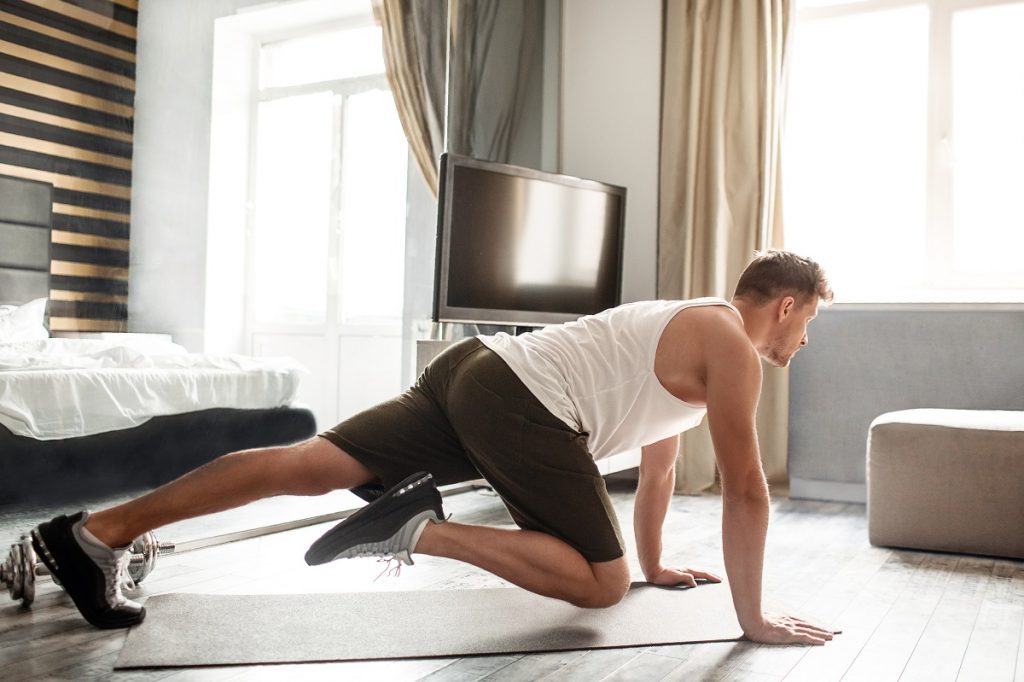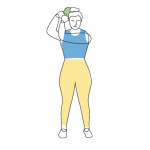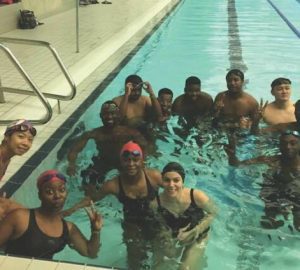Swim training when you can’t access the water

You asked
My job takes me all over the country and I often work 10 to 12 hours a day and travel on top of that. Do you have any suggestions on how I can maintain my swimming fitness with such a schedule? Is there some training I can do in the confines of a hotel room for instance or at home to maintain a certain level of fitness?
We answered
Great question. So many of us work long hours or have other time-consuming commitments such as caring for relatives. Nevertheless, if we don’t take care of ourselves, we risk both our physical and mental health. Self-care is important so that we can continue with our obligations. If swimming is something you love and if it supports your fitness and mental wellbeing, then it’s important to figure out how to keep it up, despite life’s pressures.
Skimlinks TestMoreover, if you want to take part in any swimming challenges or events, you will want to keep your swimming fitness at a decent level to make those occasions as enjoyable as possible.
During the covid pandemic we learnt that there are lots of ways to maintain swimming fitness even if you can’t access the water. However, focusing on exercises that mimic swimming movements and use the main swimming muscles may not be the best place to start. Instead, they should form part of a broader set of activities that build and maintain your overall health and fitness.
Diet, sleep and movement
When we work long hours and travel lots, it can be tricky to maintain healthy eating habits, to sleep well, and to remember to move. Before trying to build in swimming exercises, what can you do to ensure your health and fitness fundamentals are in place? If they aren’t, then you increase the risk of injury or burnout. The food element can be tricky if you don’t have facilities to prepare your own. This isn’t an article about healthy eating but try to be mindful of your eating and drinking habits. Are there any easy changes you could make that could improve things? Snack on fruit and drink water instead of eating crisps and drinking soft drinks, for example, or batch-prepare and freeze lunches at weekends rather than buying pub lunches or pre-made sandwiches.
Sleep is easily disrupted by long hours, especially if compounded with work stress and travel. Exercise can help with sleep but you shouldn’t cut back on sleep to make time for exercise. If you have to prioritise, go for sleep. If your only slot to exercise during a day is last thing in the evening, you may want to try a short, relaxing mobility and stretching routine rather than anything that elevates your heart rate.
Also, look at how much movement you can build into your day. If you’re driving, can you split the journey and take a 10-minute break to walk and stretch? Or, when you arrive at your workplace, how about walking once around the block before going in? At your desk, set a timer to remind yourself to stand up and move once an hour. Use the stairs instead of the lift. You know the drill.
You don’t need perfection but do pay attention to these fundamentals.
Swim training with no water
Once you’ve got a good foundation through diet, sleep and movement, you can start building. The pieces to add are (1) mobility and flexibility, (2) general strength and conditioning (including core) and (3) swim-specific exercises. Ideally, you should cover all three areas each week but if you can’t, consider doing them over a two-week cycle.
1. Mobility and flexibility
Both mobility (how easily you move) and flexibility (your range of movement) are important for swimming, and there are a wide range of exercises for both that you can do without any equipment and in a limited space. A good start would be to pick a few mobility and flexibility exercises for the areas you have greatest need and create your own bespoke programme. As time is short, build a routine of simple exercises that takes between 10 and 15 minutes and try to do it twice per week. Suggested exercises to include are:
- Neck rolls
- Shoulder shrugs
- Arm swims
- Standing Y stretch (for shoulders)
- Trunk twists
- Hip rotations
- Squats (hold position for a good hip stretch)
- Toe touches
- Downward dog
- Cobra
- Kneeling (good for ankle flexibility)
- Child pose
There are thousands of videos on the internet you can watch if you need details. If you can, join a yoga or Pilates class for a few sessions to ensure you do the exercises properly, or ask an instructor to show you. Keep it simple and don’t do anything that causes pain or strain. You don’t need to stick to the list above either. For example, if you have ever been prescribed injury rehabilitation or management exercises by a physiotherapist, you could include these.

2. General strength and condition
As with mobility and flexibility, there is a wide range of exercises you can do with no or minimal equipment to support your general strength and conditioning. Initially create yourself a 10-to-20-minute routine. For example, you could pick five exercises, do each one for 45 seconds taking 15 seconds rest between them, and repeating the circuit three times. If you add an extra minute’s rest after each circuit, that will take you 17 minutes.
Here are some ideas to get you started. You don’t need to do all of them, and nor is it an exhaustive list. Build a routine that works for you.
- Squats
- Split leg squats
- Plank
- Side plank
- Bridge
- Press-ups
- Crunches
- Bicycle crunch
- Leg raises
- Side leg raises
- Clams
3. Swim specific exercises
It’s difficult to train specifically for swimming on land. The best option is probably to use a swim-bench. But these are expensive and not easily transportable. A much cheaper and more portable option is swimming stretch cords – big elastic bands with handles on the end. An alternative (and a useful thing to have anyway) is a 2m-long piece of rubber fitness band. While a fitness band lacks handles, it packs away to almost nothing so is easy to take with you. While you may get a slightly better workout with the stretch cords, exercising with Theraband usually requires less space. You could perhaps consider stretch cords to keep at home and Theraband for travelling. Both can be used for injury prevention shoulder exercises and for simulating swimming. They’re not a perfect substitute for swimming but many serious swimmers use them for the strength training benefits.
To get started, you need an anchor post of some kind: a door handle, a hook over a door frame or a banister could work, as long as they are securely fixed. It works best if the fixed point is at waist height or above. With one end of the cord in each hand, hinge at the waist towards the fixing point and step back until there is light tension in the cords, then ‘swim’.
An easy way to start using them is to think about a swimming session you’d like to do, and try to replicate it. You will have to use a timer or count ‘strokes’ rather than measure distance. You can get a good workout in 20 to 30 minutes.
Triathlon coach Joel Enoch created some stretch cord sessions during lockdown that you can find and follow on Youtube. These will give you a full and testing workout.
- https://youtu.be/11LmTrzKqKk – Warm-up
- https://youtu.be/Z47vg_5WJDU – Quick Core and Cord
- https://youtu.be/ysZairbfIz4 – Power Cord Session
- https://youtu.be/Dv4npsgST7Q – 20/10 HIIT Cord Session
- https://youtu.be/e0GaDnWOFho – 60min Live Muscular Endurance Session
4. Or… Find water!
If you have a job that takes you on the road, and time permits, how about turning it into an opportunity to discover new places to swim – it could be a pool, an open water venue or a wild swimming spot. Swim England have a pool finder on their website, we have a venue listing on ours, and there are loads of books and apps to help you find wild swimming spots. You could also look for local swim groups, which are usually very welcoming to visitors.
We hope the above helps. Please let us know how you get on.
This article contains affiliate links.








